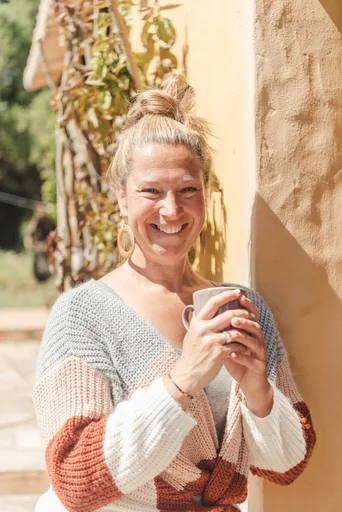Learn More About Anjali Mudra (Salutation Seal) | Yoga for Beginners

Welcome to the World of Yoga: An Introduction to Anjali Mudra
Yoga for beginners is an exciting journey, and Anjali Mudra is a fundamental aspect of this practice. So, what exactly is Anjali Mudra?
What is Anjali Mudra?
Anjali Mudra, also known as the Salutation Seal, is a hand gesture that involves pressing the palms together at the heart center with fingers pointing upwards. This simple yet powerful gesture carries deep significance in yoga practices.
The Meaning Behind the Gesture
The joining of hands symbolizes unity and balance, aligning the left and right sides of the body. It signifies respect, gratitude, and reverence for oneself and others.
Its Place in Yoga Practices
Anjali Mudra is commonly incorporated into yoga sessions as a way to center oneself and set intentions. It serves as a bridge between the physical and spiritual aspects of yoga practice.
Why It's Great for Beginners
Anjali Mudra holds immense appeal for beginners due to its simplicity and universal significance.
The Simplicity of the Pose
This mudra requires no prior experience or flexibility, making it accessible to all practitioners regardless of their physical abilities.
Its Universal Appeal
Regardless of cultural or religious background, Anjali Mudra resonates with individuals worldwide as a symbol of harmony and connection.
The Significance of Anjali Mudra in Yoga for Beginners
A Symbol of Respect and Harmony
Anjali Mudra holds profound cultural and philosophical significance, symbolizing qualities of gratitude, respect, spiritual awareness, composure, love, and equality. This hand gesture is a physical and symbolic invitation to connect with our divine nature, reminding us that we are part of the greater Universe and therefore whole and complete just as we are.
The Cultural Roots of Anjali Mudra
The origins of Anjali Mudra can be traced back thousands of years across different spiritual traditions. It is a gesture that transcends cultural boundaries, uniting humans around the world who understand its universal message of respect and harmony.
Anjali Mudra and the Concept of Namaste
In many cultures, the practice of Anjali Mudra is accompanied by the greeting "Namaste," which means "the divine light in me honors the divine light in you." This greeting encapsulates the essence of Anjali Mudra, emphasizing mutual respect and recognition of the interconnectedness of all beings.
The Benefits of Practicing Anjali Mudra
Anjali Mudra offers a wide range of benefits for practitioners at all levels, encompassing mental, emotional, and physical well-being.
Mental and Emotional Well-being
By bringing the palms together at the heart center, Anjali Mudra fosters a sense of inner calm and composure. It serves as a powerful tool for cultivating gratitude and devotion while centering oneself in preparation for yoga or meditation practices. This simple yet profound gesture encourages mindfulness and introspection, promoting emotional balance and harmony.
Physical Health Benefits
The practice of Anjali Mudra also extends its benefits to physical health. It balances the entities represented by vata, pitta, and kapha in Ayurvedic tradition, thereby harmonizing various bodily functions. Additionally, incorporating this mudra into yoga sessions can enhance overall body alignment and posture.
How to Perform Anjali Mudra: A Step-by-Step Guide

Getting Into the Pose
To perform Anjali Mudra, start by sitting comfortably in a cross-legged position or standing upright with feet hip-width apart. Follow these simple steps to ensure the correct hand position and body alignment while incorporating mindful breathing.
The Correct Hand Position
Bring your hands together at the center of your chest, with palms pressed firmly against each other and fingers pointing upwards.
Ensure that the base of your thumbs lightly touches the sternum, creating a gentle pressure against the chest.
Body Alignment and Breathing
Sit up tall with your spine straight, or stand with an elongated posture, allowing for an open chest and relaxed shoulders.
Take slow, deep breaths as you hold the pose, focusing on expanding your chest with each inhale and feeling a sense of grounding with each exhale.
Tips for Beginners
As you begin practicing Anjali Mudra, keep in mind some common mistakes to avoid and how to deepen your experience of this powerful gesture.
Common Mistakes to Avoid
Avoid hunching over or slouching while holding the mudra; instead, maintain an upright posture to fully engage the heart center.
Do not apply excessive force when pressing the palms together; aim for a gentle yet firm connection between the hands.
How to Deepen the Mudra
Incorporate Anjali Mudra into your daily yoga routine as a starting and ending gesture to set intentions and express gratitude.
Combine this mudra with deep breathing exercises or meditation practices to enhance its calming effects and promote inner harmony.
By following these steps and tips, beginners can easily incorporate Anjali Mudra into their yoga practice, reaping its numerous benefits for overall well-being.
Incorporating Anjali Mudra into Your Daily Routine
Now that you've learned about the significance and benefits of Anjali Mudra, it's time to explore how you can incorporate this powerful gesture into your daily routine, enhancing your overall well-being.
When and Where to Practice
Starting and Ending Your Day
Begin and conclude each day with a moment of reflection and gratitude through Anjali Mudra. As you wake up in the morning, take a few moments to sit quietly, bring your hands together at your heart center, and set positive intentions for the day ahead. Similarly, before retiring for the night, express gratitude for the experiences of the day by practicing Anjali Mudra as a symbol of closure and appreciation.
Integrating with Meditation and Yoga
Integrate Anjali Mudra seamlessly into your meditation or yoga practice. During meditation sessions, hold this mudra to foster a sense of inner calm and spiritual connection. In yoga, use Anjali Mudra as a prelude to asanas or as a closing gesture to honor the practice and express gratitude for its benefits.
Personal Insights and Experiences
Testimonials:
Christine Saari, Yoga Practitioner:
"Regular practice of anjali mudra creates the opening to welcome more joy and presence into our lives."
In my personal journey with yoga, I have found that incorporating Anjali Mudra into my daily routine has brought about a profound sense of grounding and mindfulness. It serves as a gentle reminder to remain present in each moment, fostering an attitude of gratitude towards myself and others. For new practitioners, I encourage you to embrace this beautiful gesture with an open heart, allowing it to guide you towards inner harmony and emotional balance.
We bring back the importance of initiation into womanhood by Roos-Veerle Krijnen & Ella-June Henrard
Welcome to the Women’s Initiation Retreat by Naked Truth Retreats, a transformative journey into the depths of your True Feminine Nature. This retreat, scheduled from 17th to 24th August 2024 in Portugal, invites you to remember the sacredness and wholeness of your being.
Roos-Veerle Krijnen & Ella-June Henrard



